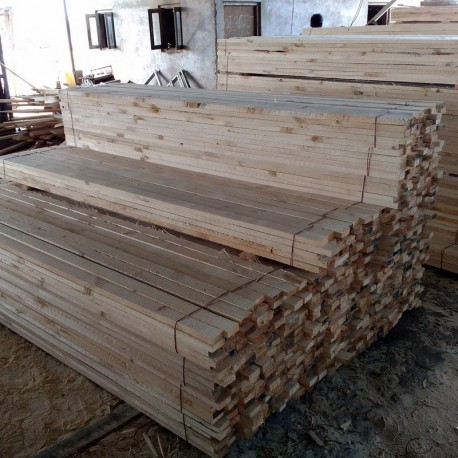New Zealand Pine | Radiata Pine Wood Lumber
Grown in the tropical and temperate regions, this New Zealand Pine Wood has the capacity to stand in dense stands, since it is fast-growing softwoods. This New Zealand Pine Wood is derived from coniferous Pine Trees that are valued for their wood-pulp and timber. Widely used for flooring purposes, this New Zealand Pine Wood can be purchased from us at economical rates.
Data sheet
| Common Name(s) | New Zealand Pine, Radiata Pine, Monterey Pine, Insignis Pine, NZ Pine |
| Scientific Name | Pinus radiata |
| Tree Size | 80-100 ft (24-30 m) tall, 2-3 ft (.6-1m) trunk diameter |
| Average Dried Weight | 515 kg/m3 (32 lbs/ft3) |
| Specific Gravity (Basic, 12% MC) | .41, .51 |
| Janka Hardness | 710 lbf (3,150 N) |
| Modulus of Rupture | 11,480 lbf/in2 (79.2 MPa) |
| Elastic Modulus | 1,458,000 lbf/in2 (10.06 GPa) |
| Crushing Strength | 6,030 lbf/in2 (41.6 MPa) |
| Radial Shrinkage | 3.4% |
| Tangential Shrinkage | 6.7% |
| Volumetric Shrinkage | 10.7% |
| T/R Ratio | 2.0 |
| Color/Appearance | Heartwood is light brown, wide sapwood is a paler yellowish white, and is distinct from the heartwood. Radiata Pine lumber is plantation-grown, and generally has very wide growth rings and is knot-free. |
| Grain/Texture | Straight grained with a medium, even texture. |
| Endgrain | Medium-large resin canals, very numerous and evenly distributed, mostly solitary; earlywood to latewood transition gradual (with very wide growth rings), color contrast moderate to low; tracheid diameter medium-large. |
| Rot Resistance | The heartwood is rated as non-durable to perishable in regards to decay resistance. The sapwood is readily treated with preservatives and is used in exterior applications. |
| Workability | Radiata Pine works well with both hand and machine tools. Glues and finishes well. |
| Odor | Radiata Pine has a faint, resinous odor while being worked. |
| Allergies/Toxicity | Working with pine has been reported to cause allergic skin reactions and/or asthma-like symptoms in some people. |
| Pricing/Availability | Radiata Pine is grown almost exclusively on plantations—most notably in Chile, Australia, and New Zealand. Prices should be moderate for an imported lumber, though most likely more expensive than domestic pines/softwoods. |
| Common Uses | Veneer, plywood, paper (pulpwood), boxes/crates, and construction lumber, Doors, Flooring, Framing, Interior Rails and Balustrades, Interior Stairs, Internal Paneling, Timber Mouldings |
| Comments | It is valued on plantations for its fast growth and utility as both a source of construction lumber as well as wood pulp in the paper industry. |
| Termite Resistant | No |
| Strength Group | Reasonably Low |
| Shrinkage | Medium |





